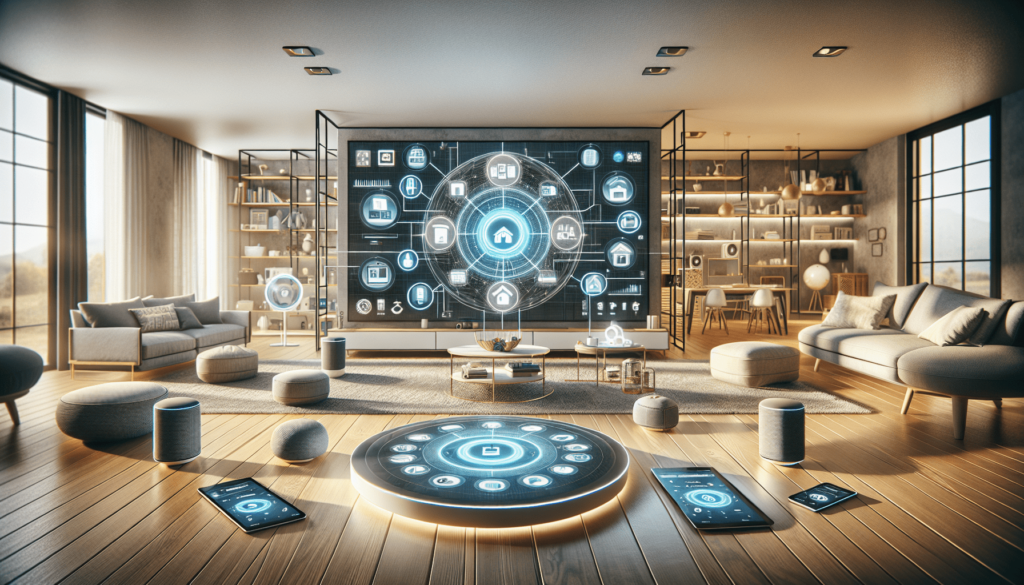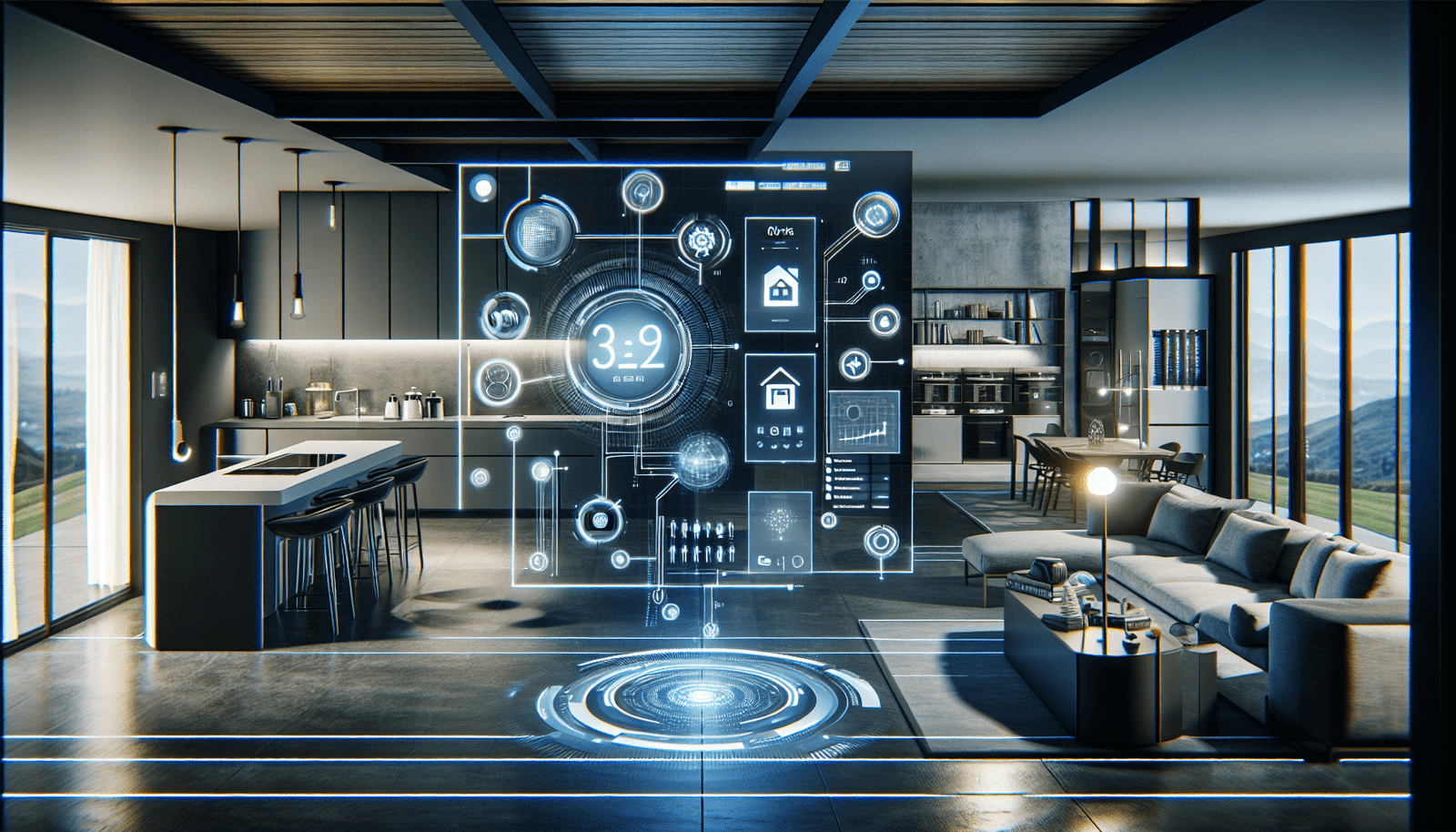Have you ever wondered how smart home systems can cater to the unique needs of a large family? With technology advancing at a rapid pace, smart homes are no longer just a concept of the future—they’re becoming an integral part of our everyday lives. For large families, the advantages can be particularly substantial, offering enhanced convenience, security, and energy management.
Understanding Smart Home Technology
Smart home systems connect various devices and appliances in your home through a network, allowing you to control them remotely or through automation. These systems can include everything from lighting and heating to security cameras and refrigerators, all capable of communication with each other and with you via a smartphone or computer.
How Smart Home Devices Work
At their core, smart home devices are equipped with sensors and software that enable them to gather data and perform certain functions either autonomously or with minimal user input. They operate through a variety of communication protocols like Wi-Fi, Bluetooth, Zigbee, or Z-Wave to send and receive data.
The Cost of Smart Home Systems: Are They Worth It?
When considering smart home systems, the cost is a key factor. Initial purchase and installation fees can be high, but the long-term savings and added convenience often justify the investment.
Installation Costs
Setting up a smart home can involve expenses ranging from a few hundred to several thousand dollars, depending on the complexity of your system. Hiring professionals for installation can ensure a smoother setup process but may add to the cost.
Long-Term Savings
Smart home devices often lead to savings on utilities and maintenance. For instance, smart thermostats can significantly cut heating costs by optimizing temperature settings based on patterns of usage, potentially saving you hundreds of dollars annually.

Features to Look For In Smart Home Systems for Large Families
With many smart home products on the market, knowing which features are most beneficial can make a big difference, especially in a large household where multiple users have diverse needs.
Multi-User Functionality
Large families benefit from systems that allow multiple user profiles. Everyone from parents to children can customize settings, such as lighting or temperature, based on their preferences.
Robust Security Features
Enhanced security is often a primary reason families upgrade to smart systems. Look for features such as real-time notifications, video monitoring, and smart locks to help keep your home and loved ones secure.
Efficient Energy Management
Smart homes excel at optimizing energy usage. Consider devices like smart lights and energy-efficient appliances that not only bring convenience but also reduce the energy footprint of your home.
Seamless Connectivity
Look for systems that offer compatibility with numerous devices and platforms. Systems that can be integrated with voice assistants such as Alexa, Google Assistant, or Siri provide added convenience.
Security and Privacy: Protecting Your Smart Home
While smart technology offers numerous benefits, it also introduces security risks. Understanding how to protect your smart home is crucial.
Potential Risks
Like any connected device, smart home systems are vulnerable to cyber attacks. Unauthorized users can potentially gain access to your network and control systems if security measures are inadequate.
Best Practices for Security
Regularly updating your devices and using strong, unique passwords can significantly mitigate security risks. Consider devices with built-in encryption and multiple layers of protection to enhance your home’s security architecture.

Energy Efficiency and Sustainability Benefits
Smart home systems contribute significantly to energy efficiency, which is both environmentally and financially beneficial.
Smart Thermostats
Automated thermostats adjust the heating and cooling of your home based on your daily routines and the outside climate, ensuring efficiency and comfort.
LED Smart Lighting
Switching to LED smart bulbs can save you up to 80% in lighting energy costs. These lights can be programmed to adjust brightness according to time of day or occupancy, minimizing waste.
Comparing Smart Home Solutions
Understanding the various smart home solutions available can help you make an informed decision about which systems meet your family’s needs.
| Feature | Example Product | Benefits |
|---|---|---|
| Multi-Room Audio | Sonos System | Provides high-quality sound throughout the home |
| Smart Thermostat | Nest Learning Thermostat | Adjusts temperature based on your schedule |
| Home Security System | Ring Video Doorbell | Offers real-time video and audio of your doorway |
| Smart Lighting | Philips Hue | Customizable settings and energy savings |
Practical Set-Up Guides
Installing smart home devices can be daunting, but many systems are designed for ease of use.
DIY Installation
Many smart home systems offer plug-and-play solutions that require minimal technical expertise. Online tutorials and user manuals are generally sufficient to guide you through the setup.
Professional Assistance
For complex installations, professional setup ensures that your devices are properly connected and configured. This can be especially beneficial for larger systems that integrate multiple devices and platforms.
Future-Proofing Your Smart Home
As technology evolves, future-proofing your smart home ensures that your investment remains valuable and functional over time.
Standards and Protocols
Choose devices that adhere to universal standards and are compatible with emerging technologies. Systems that offer firmware updates and support new models can extend the longevity of your smart home.
Innovation and Trends
The smart home industry is constantly evolving, with innovations such as AI and machine learning enhancing user experience. Keeping an eye on these trends can help you incorporate the latest technology to meet your family’s changing needs.
Making the Investment Fit Your Budget
Determining whether smart home investments align with your needs and budget can be challenging but essential.
Evaluating Needs
Start by identifying the specific needs of your family. Prioritize systems that offer the most significant benefits and consider starting small, gradually building the system over time.
Balancing Costs and Benefits
Weigh the upfront costs against the potential savings and enhanced quality of life. A well-optimized smart home system can provide a high return on investment through energy savings, convenience, and security.
In essence, the right smart home system for a large family features ease of use, compatibility, and the ability to grow as your needs evolve. Bear in mind that the technology isn’t just about function; it’s about tailoring the living experience to fit your family’s lifestyle, making daily life easier, more convenient, and ultimately more enjoyable.




